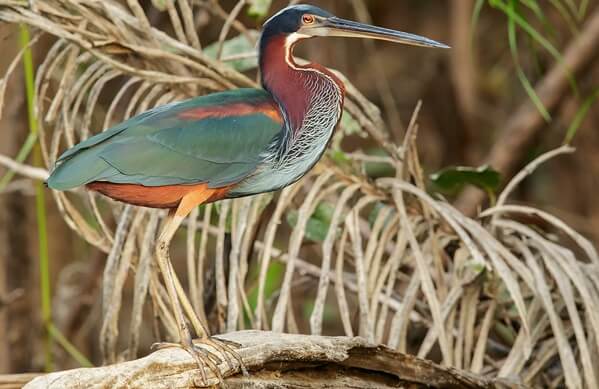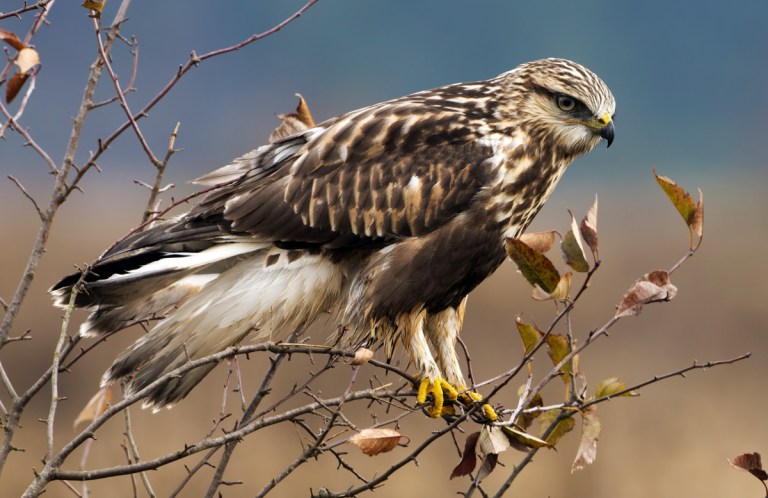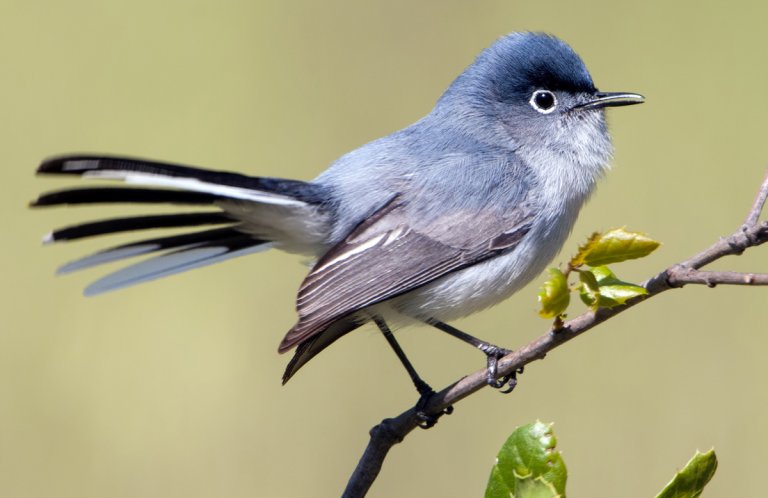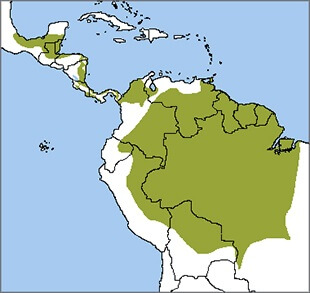 The colorful, reclusive Agami Heron is a coveted sighting for birders visiting flooded lowland forests and slow-moving waterways of Central and South America. This long-billed, medium-sized heron is so distinctive that it occupies its own genus, Agamia. Its species name, "Agami," comes from a Cayenne Indian word for a forest bird.
The colorful, reclusive Agami Heron is a coveted sighting for birders visiting flooded lowland forests and slow-moving waterways of Central and South America. This long-billed, medium-sized heron is so distinctive that it occupies its own genus, Agamia. Its species name, "Agami," comes from a Cayenne Indian word for a forest bird.
In Brazil, the Agami is sometimes called Soco beija-flor, "hummingbird heron," for its vivid plumage. It's also commonly known as the Chestnut-bellied Heron.
Threats to Agami Heron are poorly understood, but habitat loss is probably one of the most significant factors affecting this heron and other birds that share its lowland habitat, including Mangrove Hummingbird, Great Curassow, and Harpy Eagle.
The Agami Heron's retiring nature and preference for dense vegetation makes the species difficult to study, and its total population is still unknown. Although resident throughout its range, it moves seasonally, abandoning nesting areas for deeper forest after the breeding season.
Undercover Fisherman
This heron specializes in fishing from river banks or branches overhanging the water. Its long neck and dagger-like bill — the longest of any New World heron's — gives the Agami a significant striking range, while proportionally short legs confine the bird to shallow water. Agami Herons rarely wade in the open, preferring to forage for small fish, snails, and insects while stalking along under dense cover.
Sign up for ABC's eNews to learn how you can help protect birds
Equal Opportunity Courtship
Unusual for birds, both male and female Agami Herons flaunt colorful courtship plumage during the breeding season. Both sexes also show heightened color in the lores (the fleshy area between the base of the bill and front of the eyes), which turn an intense red during displays.
The Agami's spectacular courtship display begins when a male chooses a display site, then starts to "dance" with shaking plumes, rocking movements, and bill-snapping. An interested female will approach the site and perform similar displays until the male accepts her presence. This process may go on for several days, as the male may aggressively repel the female at first. After some persistence on the female's part, the birds form a pair-bond, mate, and begin to build a nest.
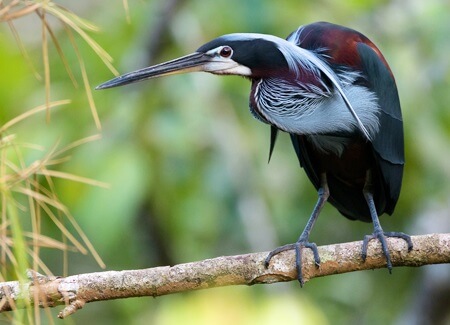
Agami Heron in its swanky breeding plumage. Photo by Kyle C. Moon
Recent fieldwork has found that Agami Heron, like Reddish Egret and many other waterbirds, nest in colonies. The birds hide their nests, a loose platform of sticks, within the forest canopy.
Conserving Agami Herons in Costa Rica
The Agami Heron is listed as Vulnerable by the International Union for Conservation of Nature, based on predictions of future habitat loss in lowland forests, particularly throughout the Amazon region.
ABC partner Osa Conservation protects several conservation properties in Costa Rica's Osa Peninsula where this shy, spectacular heron can be seen, along with more than 450 other species of other birds, including the endangered Black-cheeked Ant-Tanager and Yellow-billed Cotinga.
In 2016, ABC celebrated the 10th anniversary of its sustainable tourism program, which is designed to prevent the extinction of some of the Americas' rarest bird species. ABC's reserve network now includes more than 70 tropical reserves, including Costa Rica's Yellow-billed Cotinga Sanctuary, and spans close to one million acres. Find out more about visiting the Osa here.
Donate to support ABC's conservation mission!





































